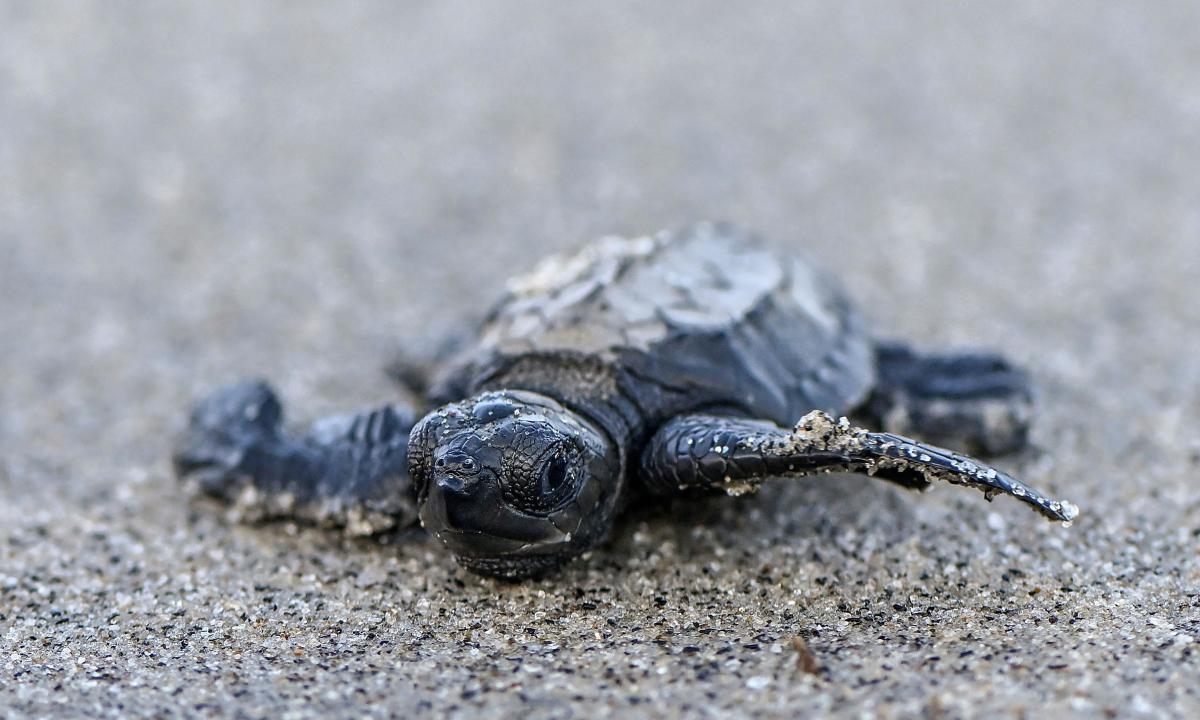“Rising Temperatures Pose Major Threat to Sea Turtles: Study”
Photo: Luis Acosta/AFP/Getty Images
Warming oceans are likely to threaten sea turtles’ survival, even as the animals lay eggs during cooler seasons to adapt to climate change, new research suggests.
Modeling by Australian scientists at Deakin University has found that sea turtles are unlikely to be able to alter their nesting behavior enough to mitigate the effects of higher sea surface temperatures.
The researchers analyzed 58 nest sites worldwide covering all seven sea turtle species and suggest that if the reptiles laid their eggs earlier to avoid hotter beaches, each shift mitigates at best 55% of a 1.5C rise in sea temperature would.
Related: Global warming means almost every sea turtle in Florida was now born female
The sex ratio of turtle hatchlings is closely determined by the temperature of the nest in which the eggs are hatched, with warmer nests producing more females. Higher temperatures have also been associated with lower hatching success rates.
In a ‘doomsday scenario’, according to study co-author Prof Graeme Hays, ‘only females may be produced from certain populations, which would then obviously lead to population extinction’.
Previous research has linked warmer seas to predominantly female green sea turtle populations in parts of the Great Barrier Reef. A 2018 study found that 99.1% of juvenile turtles obtained from breeding beaches north of the reef are female.
Hays stressed that the new research isn’t “all doom and gloom,” but stressed the potential need for conservation strategies to cool temperatures on the breeding beaches.
“There is a lot of good news around the world with sea turtles,” he said. “Populations are increasing at a number of locations around the world; Nature conservation works really successfully.
“With the feminization of global warming [research]what we are trying to do now is to get the information so we can avoid problems later… [so] If turtles need help along the way, we won’t be caught off guard.”
Sea turtles tend to nest in the area they hatched from, a behavior known as natal philopatry. That means, the researchers suggest, they “cannot readily change their range to accommodate warming temperatures.”
The study, published in the Royal Society Open Science journal, used a projected 1.5°C increase in sea temperature “as this warming is very likely to occur before the end of the century”.
It was also based on existing research showing that warming temperatures can lead to earlier nesting. A study of loggerhead turtles in the Mediterranean had previously found that in extreme cases, turtles were laying eggs about 18 days earlier when the water warmed by 1°C.
Christine Madden Hof, global director for sea turtle conservation at the World Wide Fund for Nature (WWF), said: “We need more data to understand how different species of sea turtles will fare in different places around the world of climate change.
Related: More than 1.1 million sea turtles have been illegally killed in the last 30 years, study finds
“Where we know these populations aren’t going to do well, we should really seriously consider a science-based method.” [interventions].”
WWF is involved in trials where seawater and freshwater have been successfully used to artificially cool turtle nests.
Increasing shade coverage on beaches by tenting or planting vegetation has also been suggested as an approach to improve sex ratios. It would take care to ensure nesting habitats are not disturbed, Hays said.
“You’re playing God when you intervene,” Hof said. “It could be that a really cool rainy year or number of years will produce enough males to sustain the population, so we don’t want to intervene unless it’s necessary.”
WWF is also currently investigating the minimum number of male turtles needed to sustain populations.
Of the seven living sea turtle species, six are on the International Union for Conservation of Nature Red List of Threatened Species.
Don’t miss interesting posts on Famousbio










